What's new in v1.1
With this release, we've enhanced stability and improved the room connection engine, enabling you to easily show the connection status to your users with a simple API.

Ensuring stability and a seamless realtime experience is crucial for collaborative applications. Liveblocks 1.1 not only introduces significant improvements in connection stability, but it also enables new APIs allowing you to build high-quality user experiences with minimal effort.
By completely rewriting our previous connection engine as a formalized state machine, we have taken a holistic approach to resolve all known bugs around connectivity and client recovery in edge cases. In this blog post, we’ll explore:
- Connection stability enhancements
- Connection status API
- Lost connection API
- DevTools offline support
Connection stability enhancements
With the 1.1 release, we’re placing a strong emphasis on connection stability around edge cases, ensuring a reliable realtime experience for users. The rewritten connection engine, formalized and implemented as a state machine, streamlines the connection and reconnection process, greatly reducing the number of states we handle internally, making it easier to reason about the exact state of the Liveblocks connection at any given moment.
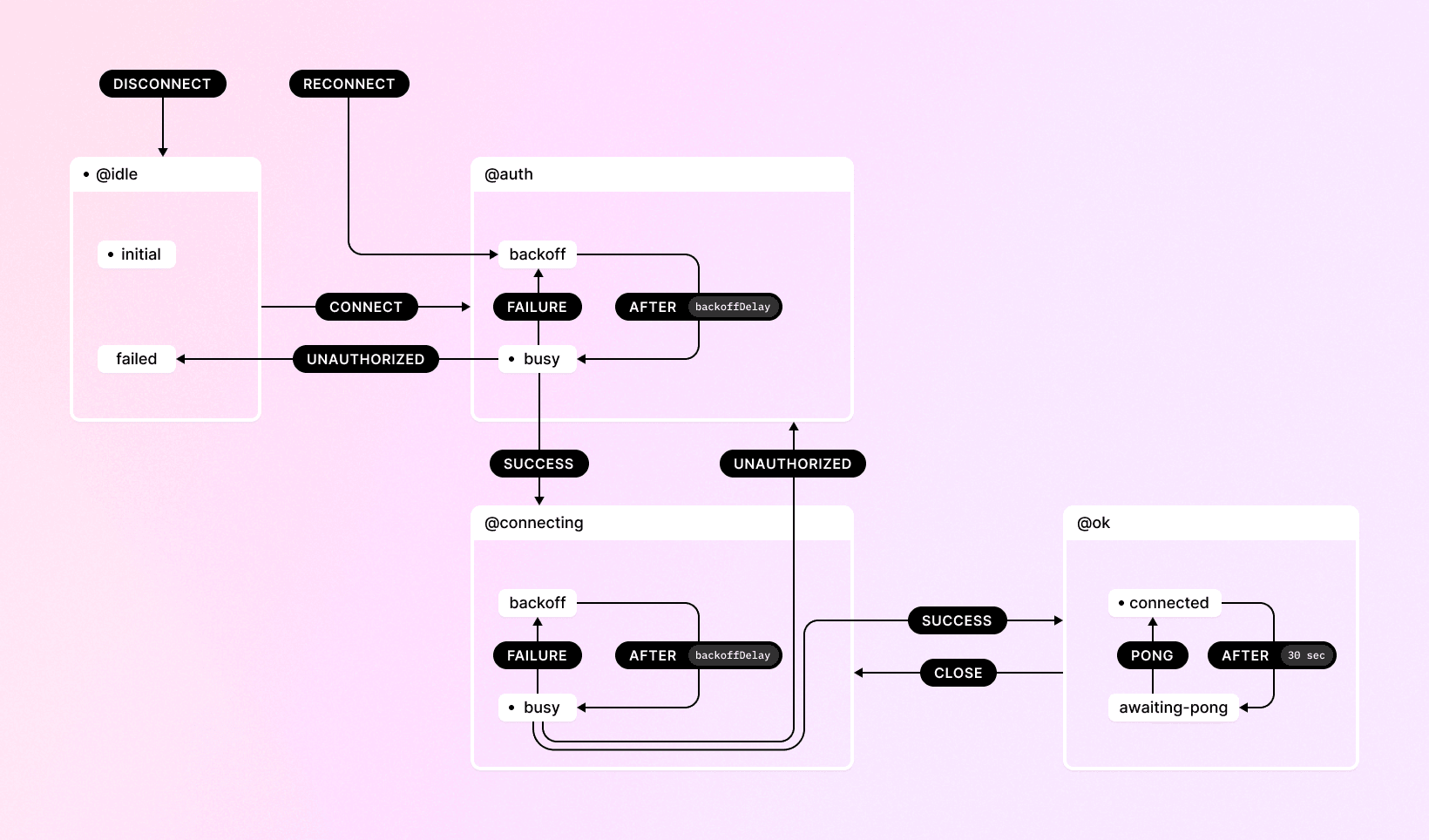
The stability enhancements extend to the collaborative aspect of applications, ensuring a smoother and uninterrupted experience that recovers quickly, minimizing disruptions and providing users with a seamless collaboration environment.
Features
In particular, we’ve made improvements to specific areas:
- The client now restores connections much more quickly after your network becomes available again, or after waking up from a long sleep.
- The client will respect 401 and 403 HTTP responses from your backend, and will take them as a sign that retrying will not have an any effect. This means that responding with a 401 or 403 in your auth endpoint will cause the client to stop trying to establish a connection altogether, reducing load on your application’s backend. Previously it would keep trying infinitely.
Rewriting the connection engine has also enabled us to create new APIs.
Connection status API
We’re now providing a clearer connection status API with simplified, and more intuitively ordered, status names. We’re also deprecating the old names, because they were tricky to understand, and confusing to work with.
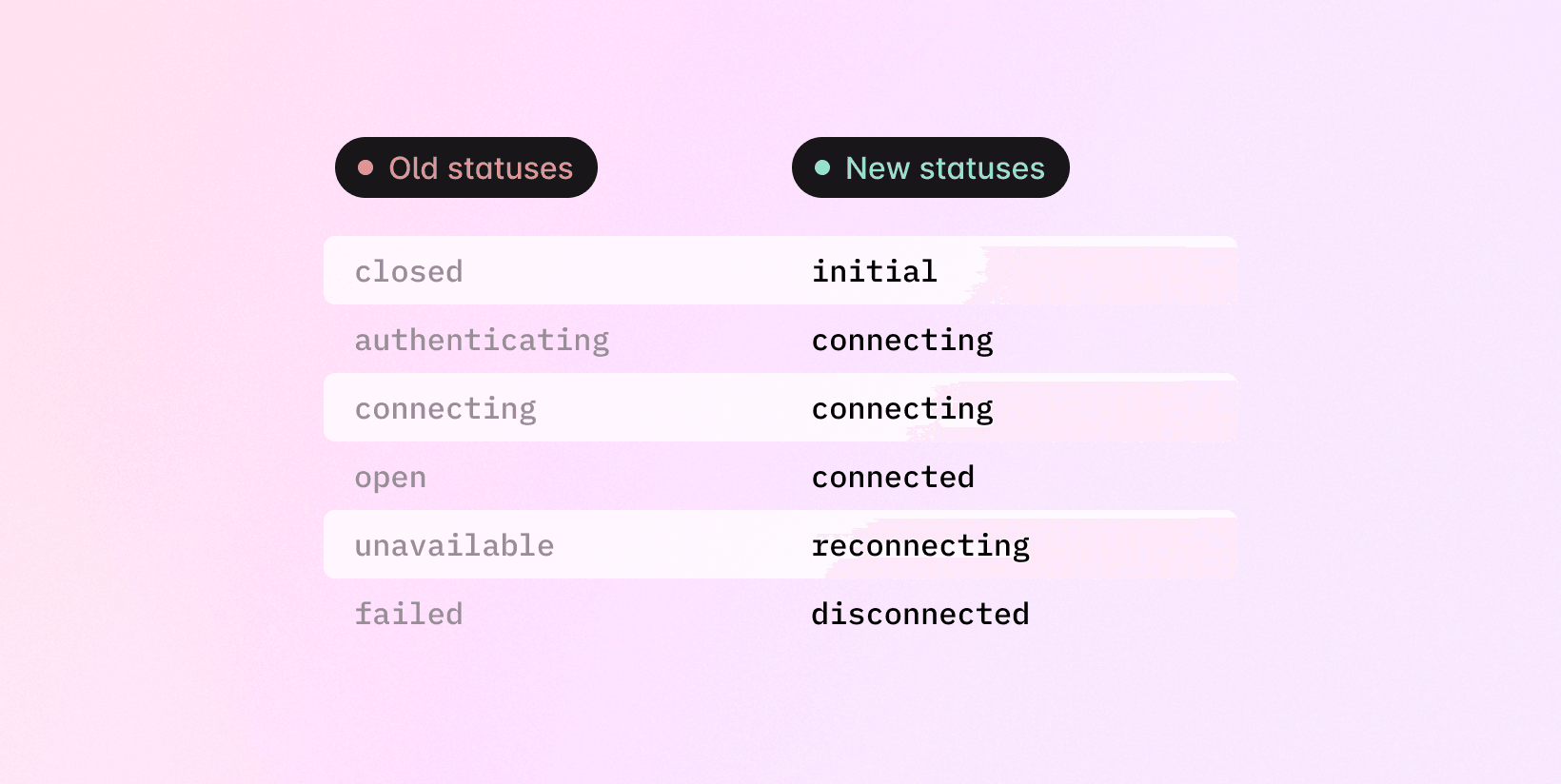
Previously, without learning about Liveblocks internals, it was not at all apparent when your app would be in each state, raising more questions than answers.
- What does
openmean? - When is my app
unavailable, and is it before or afterfailed? - What’s the difference between
authenticatingandconnecting?
In Liveblocks 1.1, you can subscribe to a new status subscription, which uses a
fresh new set of states: initial, connecting, connected, reconnecting,
disconnected.
With the status subscription, it’s immediately apparent which state your app
starts in, and the order in which each state occurs. And as an added bonus, you
can now also distinguish between connecting and reconnecting, which is an
important difference when building real world applications.
Building a status badge
With this addition, it’s now easier than ever to create a connection status badge, and display the current state of your app.
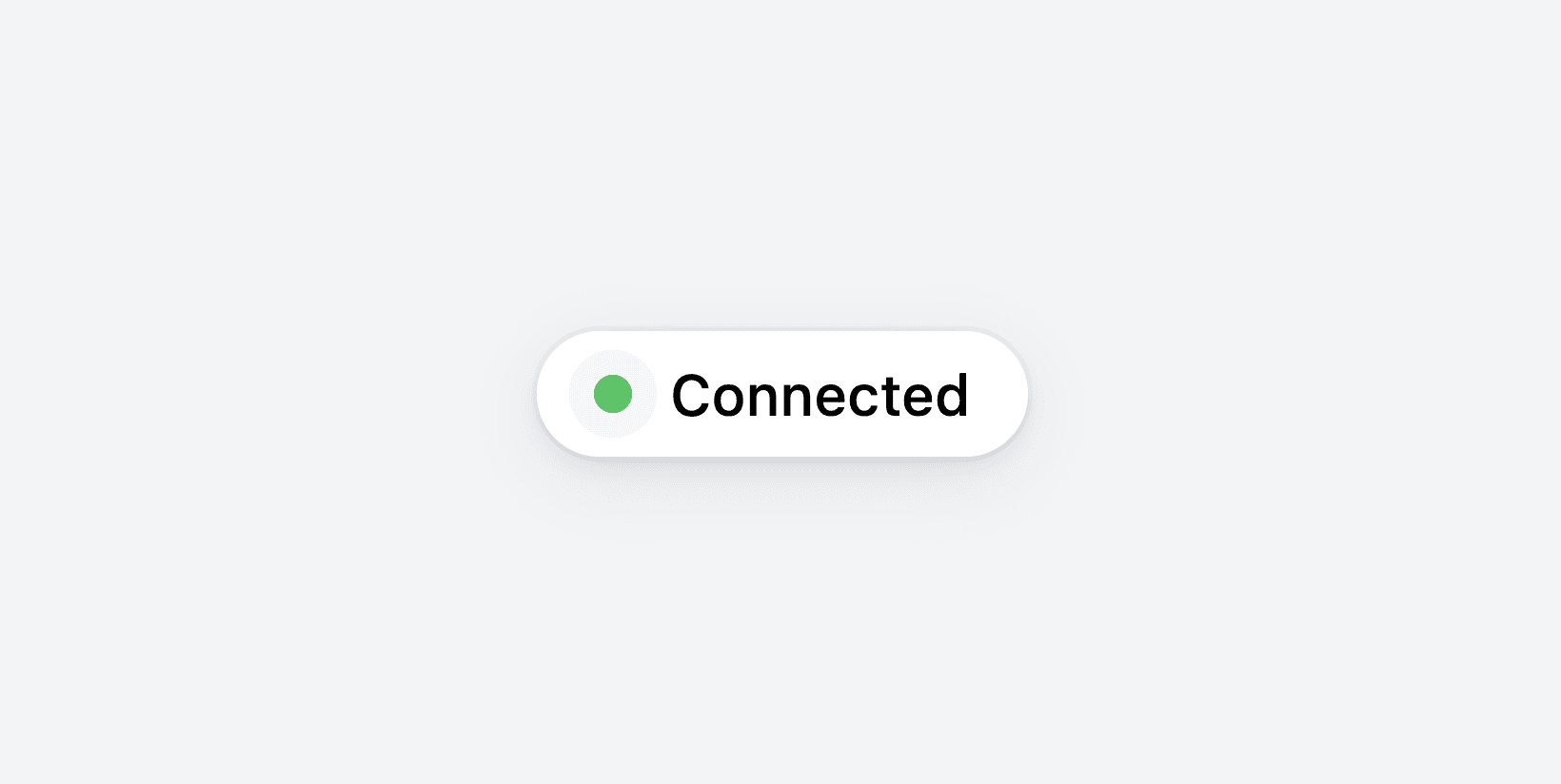
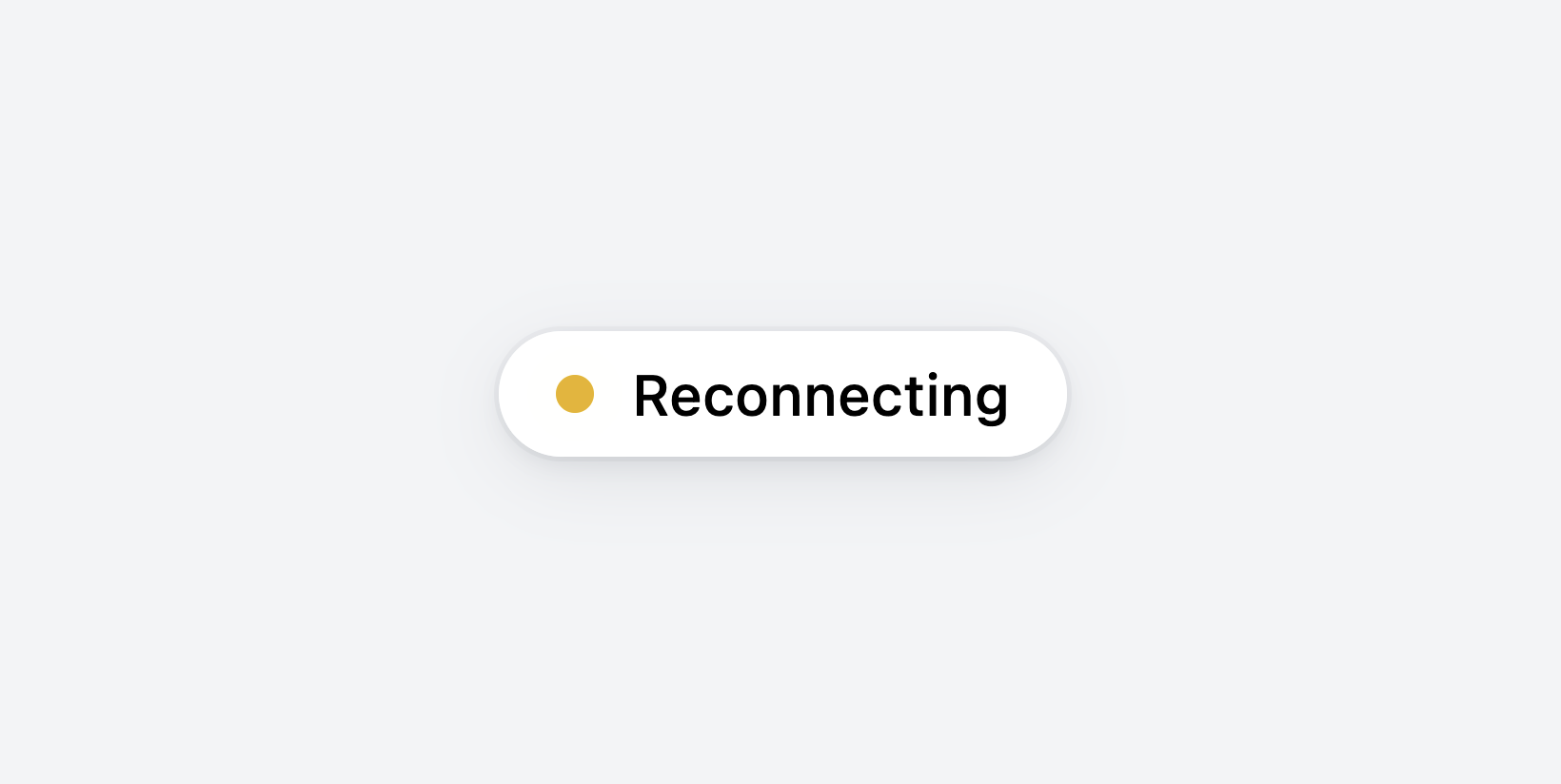
To build this in React, import the new
useStatus hook to return the
current online status.
We’ve also added a JavaScript equivalent to this hook to our client package for
other framework users,
room.subscribe("status").
Lost connection API
When a user loses connection to your app, for example because of a poor Wi‑Fi signal, it’s important to let them know about it. You can do this by displaying a toast notification, however, you don’t have to let them know immediately.
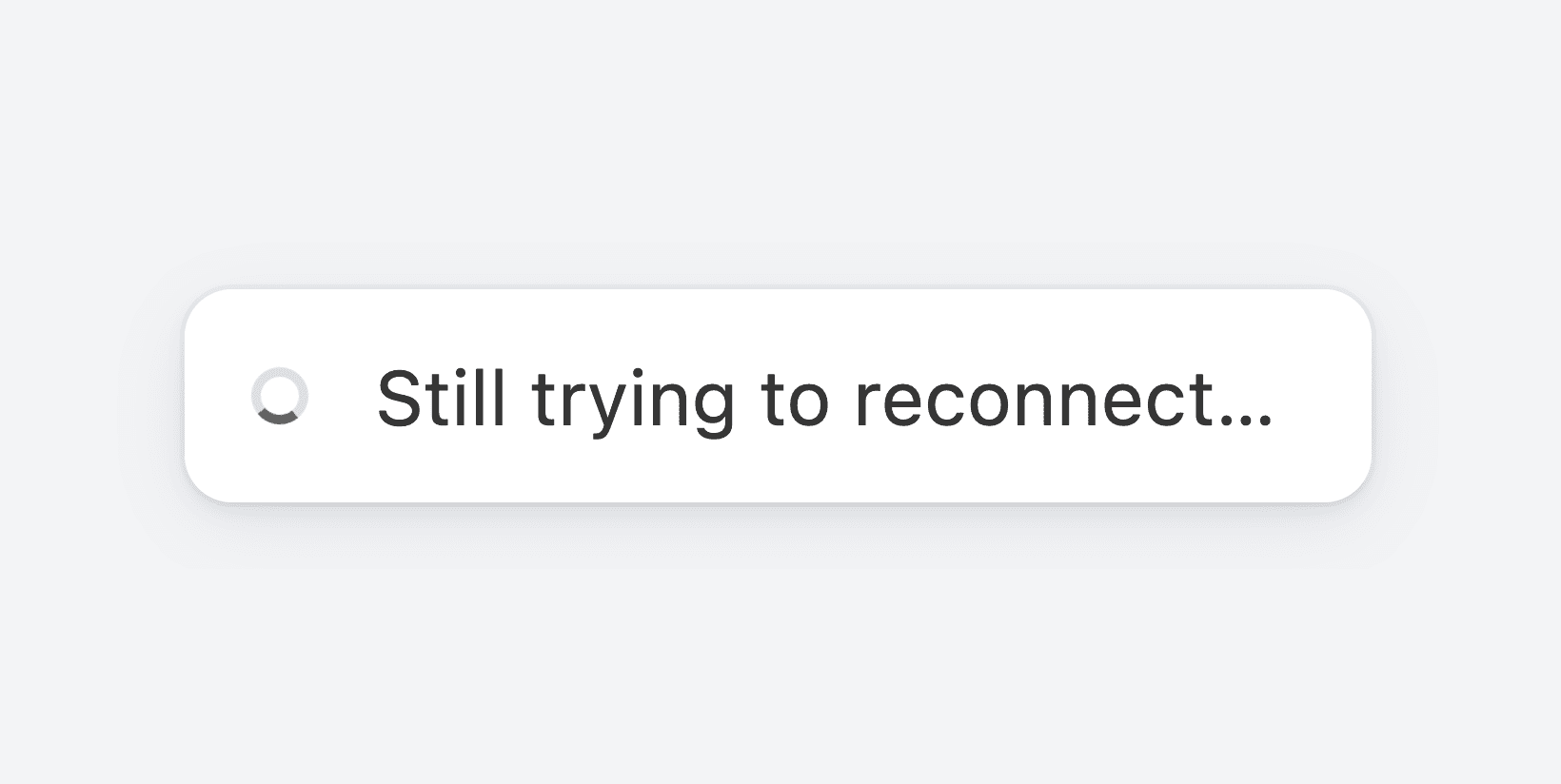
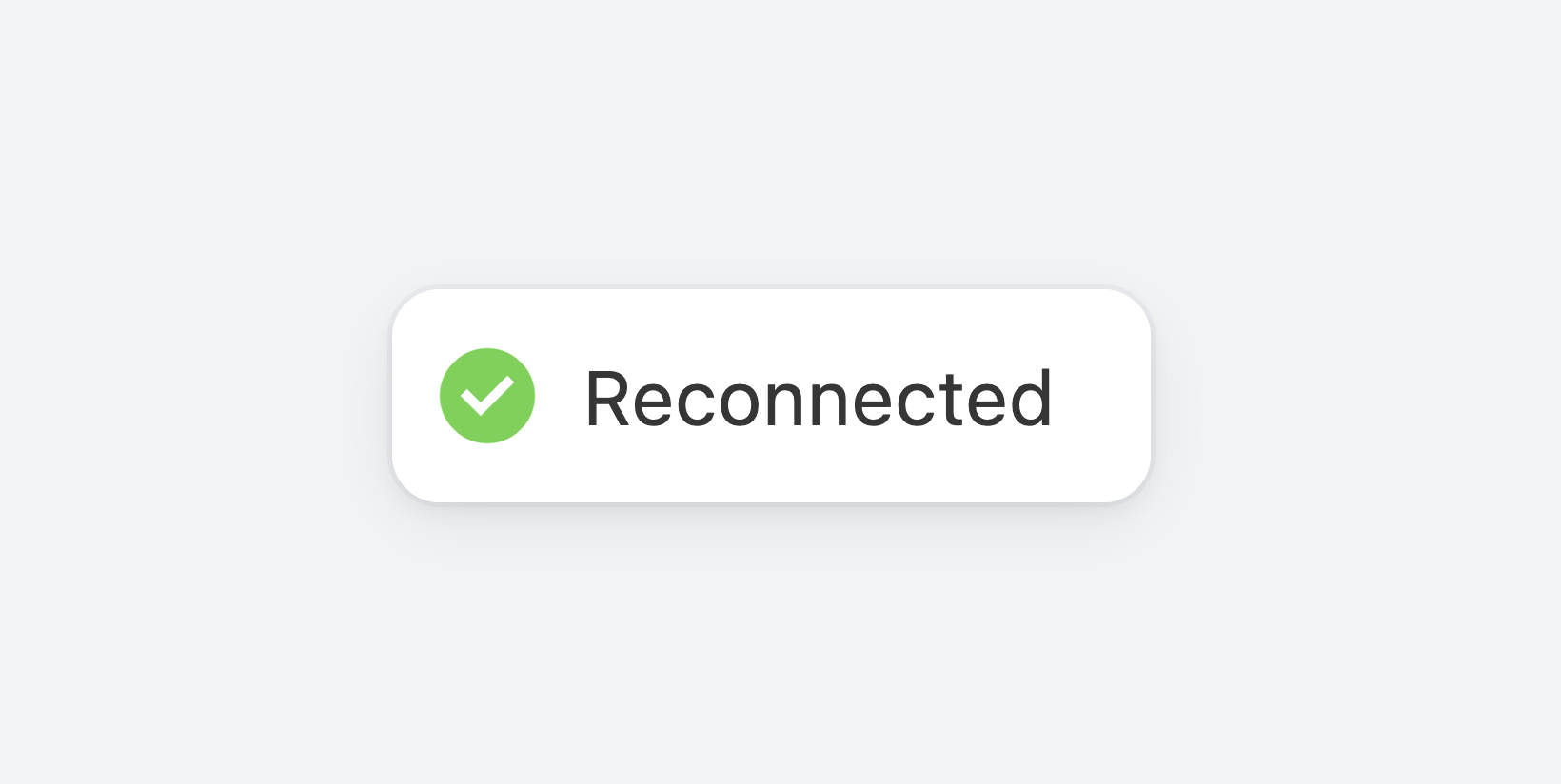
Because Liveblocks continues working after a connection interruption, and then synchronizes after reconnecting, it’s safe to ignore brief connection hiccups, and allow the user’s device a few seconds to reconnect. Only after this period is it necessary to consider a connection “lost”. With this in mind, we’ve added another new feature.
Lost connection listener
In Liveblocks 1.1, you can subscribe to a new “lost connection” event, making it far simpler to create these toast notifications and handle reconnection behaviour. What’s important about our new subscription, is that we handle the behaviour for you:
- Short connection issues are ignored, this event is for when a more serious problem has occurred.
- This event is only emitted after a user has connected and then had a problem.
- If nothing goes wrong, your user will never receive this event.
Implementing this was possible previously, but a deep understanding of our internals was required to create a reliable implementation.
Building toast notification warnings
Below is a video recording of the open-source Connection Status example we put together to demo the sort of experience you can create with those APIs.
To build toast notification warnings in React, import the new
useLostConnectionListener
hook alongside your favorite toast notification library, for example
react-hot-toast.
We’ve also added a JavaScript equivalent,
room.subscribe("lost-connection").
Alongside this addition, we’ve also made a change to others.
Change to others
Previously, others would be
reset as soon as a reconnect would happen under the hood, even if that reconnect
happened quickly. This meant that even if a network interuption lasted just
milliseconds, live avatars or other
presence indicators would have a flash of unrendered content,
before reappearing. We’ve fixed this.
In Liveblocks 1.1, others will ignore short reconnections, similar to the lost
connection API, and will only reset if a noticeable problem occurs, preventing
any unwanted user interface flashes.
Configuring the lost connection timeout
It’s possible to configure how quickly you’d like to inform your users about
problems reconnecting using the new lostConnectionTimeout client option. The
default value is 5 seconds, and we recommend setting it between 3 and 15
seconds.
This enhanced user awareness improves transparency, empowers users to take appropriate actions, and contributes to an overall positive user experience.
Deprecated APIs
While we’ve carefully taken care of every edge case we could think of, we have introduced some behavioral changes to fix bugs and make the whole experience more stable. As a result the following API are being deprecated as part of 1.1:
room.subscribe("connection")room.getConnectionState()
DevTools offline support
Before Liveblocks 1.1, if your connection was lost, you’d see our DevTools jump back to the “loading” state, making it impossible to observe storage and presence while the client was trying to reestablish a connection. This is no longer the case!
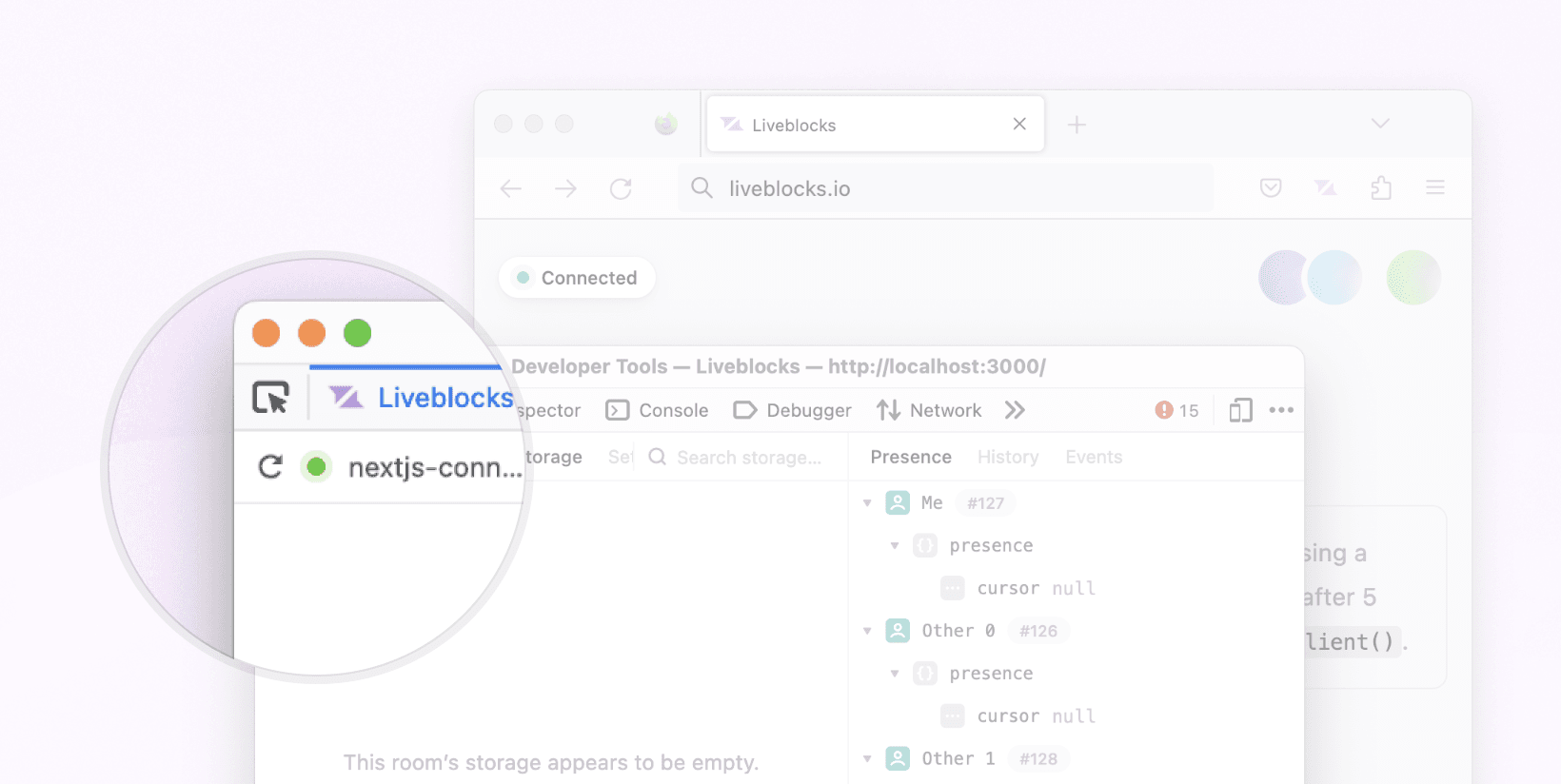
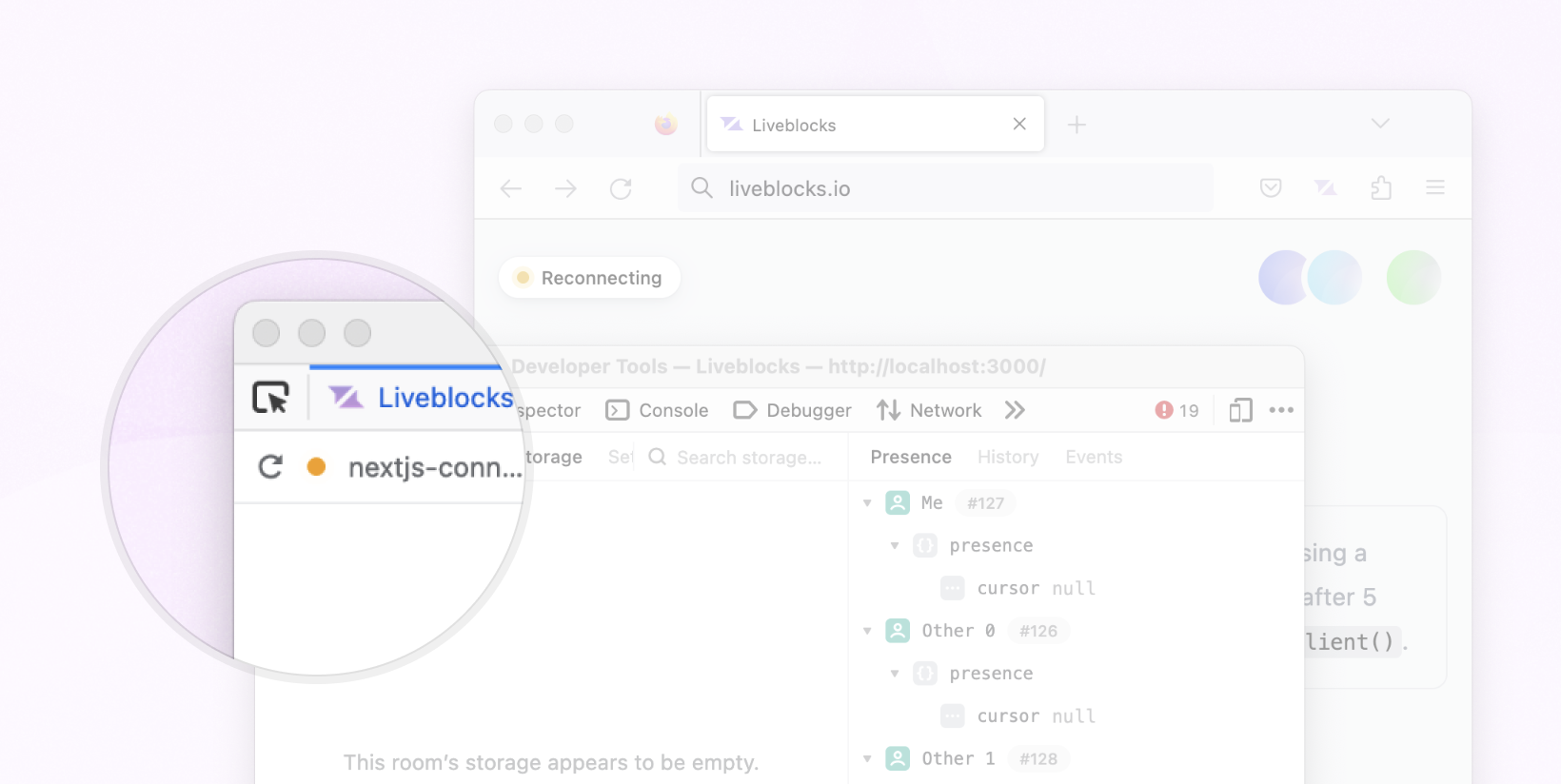
Now, when reconnecting, both storage and presence remain introspectable, so you can actually see how they’re behaving while not connected to the Liveblocks servers. This more accurately reflects the way the client actually handles data (all the storage and presence data still exists in the local client).
Contributors
Huge thanks to everyone who contributed and specifically to Chris Nicholas for the feedback and help testing this out. Also a big shout out to our incredible community that keeps jumping in to help us improve our infrastructure! Keep checking out the changelog for the full release notes – see you next time!
Ready to get started?
Join thousands of companies using Liveblocks ready‑made collaborative features to drive growth in their products.


